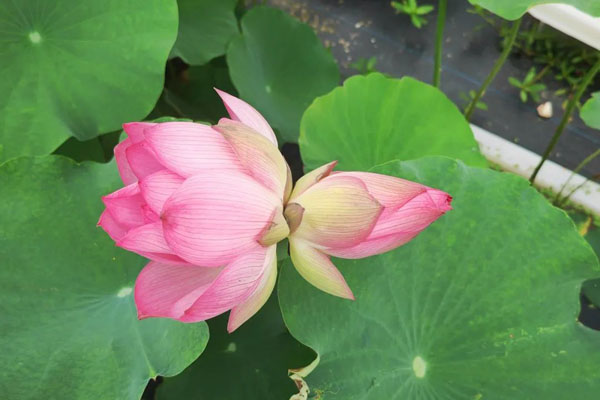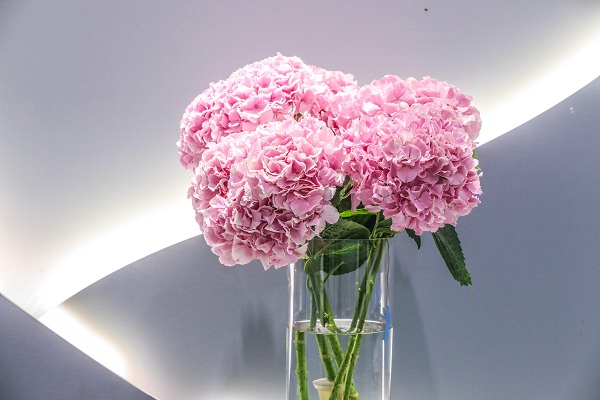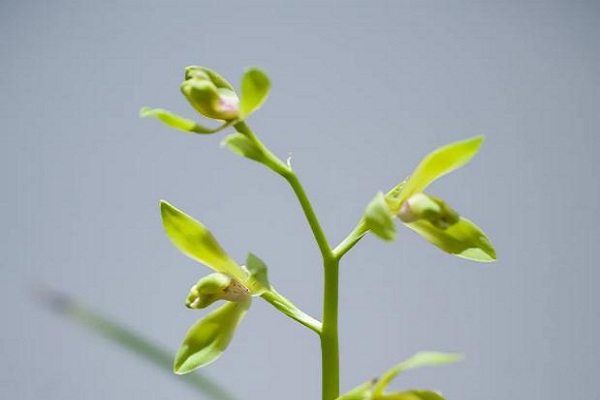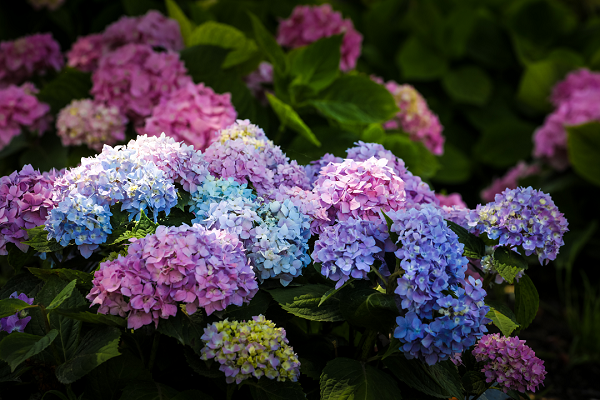
A twin lotus blooms in Chenshan Botanical Garden. [Photo/WeChat account: sheshanlvyou]
There was excitement as this year's first twin lotus in the Chenshan Botanical Garden – located in the Sheshan National Tourist Resort in East China's Shanghai city – bloomed recently.
A twin lotus – also known as a conjoined lotus – is a rare and exquisite phenomenon that occurs when two lotus buds grow on one stem. The chance of its existence is only about one in 100,000.
As a result, the twin lotus is regarded as a sign of good fortune in China. It is often used as a token of loyalty in love and marriage, as well as a symbol of a deep bond between brothers. Because of its uniqueness and elegance, it has been adored and praised by the literati since ancient times.
The twin lotus is not a kind of lotus species and cannot be inherited by a plant. It is caused by flower bud mutation and has a short flowering period of only 3-5 days, which makes it even more precious.
The twin lotus that bloomed this time belongs to the Wuyi twin lotus variety, which is the most frequent one to produce twin flowers among all the varieties preserved in the special lotus garden.
This garden is not open to visitors, so the public can only enjoy the pictures of the blossoming twin lotus.
However, there are currently seven varieties of lotuses blooming in the 12,000 square meters of Xihu Lake in the park.
In addition, visitors can appreciate fine lotus flowers in the flower boxes outside Gate 1 of the Chenshan Botanical Garden. There are 12 varieties of lotuses on display there.
Quick Fact
The Shanghai Chenshan Botanical Garden is located in the Shanghai Sheshan National Tourist Resort in Shanghai's Songjiang district and covers an area of 207 hectares, making it the largest botanical garden in East China.
The garden area used to be occupied by old residential compounds, rice-farming plots and a limestone cave before the local government in 2004 decided it would become a place to grow and study plants.
Today, Chenshan is a national 4A-level scenic spot and member of the international community of botanical gardens, as well as a leading facility dedicated to the collection, conservation and cultivation of plants in China.
It has a collection of more than 15,000 species and varieties of plants from 71 countries and regions, including some rare and endangered species. The plants are labeled with their names and identifying characteristics.


